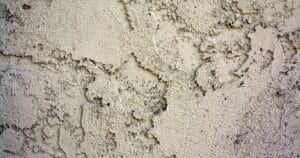Plaster versus Stucco: What’s the Difference?
Those of us in the building materials industry often say that plaster and stucco are interchangeable and mean the same thing. But is that true?
Plaster and stucco may look similar and are cement-based, but there is a difference between the two regarding application and style. Plaster is best applied as an interior finish and has a smoother look, whereas stucco acts the opposite. It tends to have a rougher finish and works best utilized on an exterior wall project. Though these materials have differences, the good news is that contractors and project managers can use Flannery’s Aluminum trims interchangeably for both Plaster and Stucco!
Typically, our plaster and stucco trims are sought out for stucco projects, but our trims can complement a plaster wall system just as well. You may wonder why our trims are utilized more on exterior stucco jobs versus plaster interiors. Typically, building interiors use drywall because it is a more cost effective and forgiving material to incorporate into a space that wants to utilize the walls for decoration. Nonetheless, suppose you are looking for trims for your interior plaster walls; in that case, we can provide you with trims that add a decorative flair because Flannery proudly provides trims that are both durable and ornamental to any space they occupy.

Flannery is always adding new shapes to our catalog, and we now have our Plaster Parapet Cap up on our website! Be sure to check it out! It is one of our many stucco termination trims and is to be used at the top of exterior walls without an overhang or soffit. The Plaster Parapet Cap has a return leg that can be integrated into a fabricated sheet metal parapet cap to finish off the building’s parapet and prevent moisture from getting behind the roofing materials.
